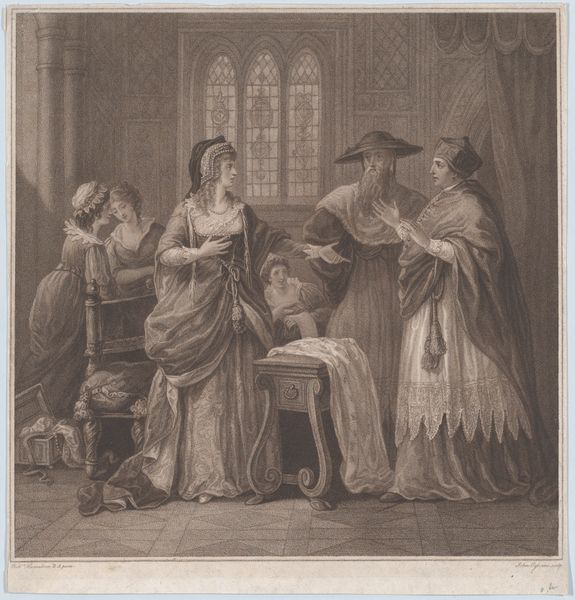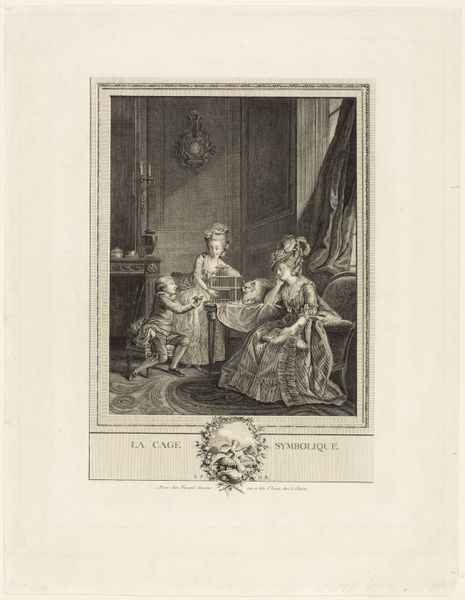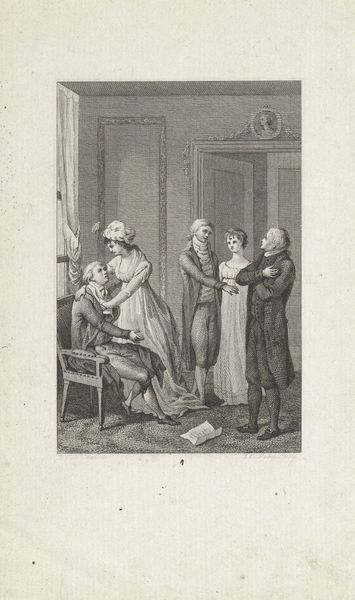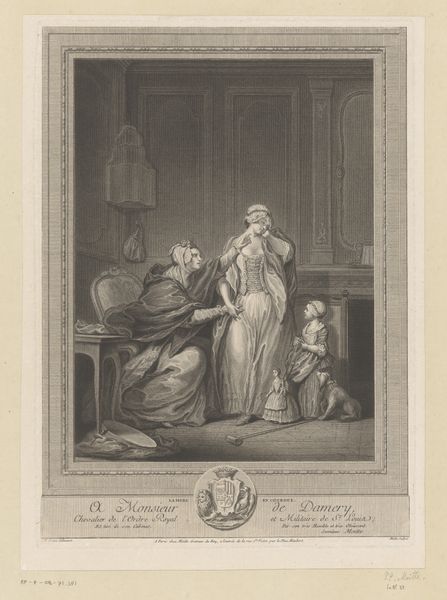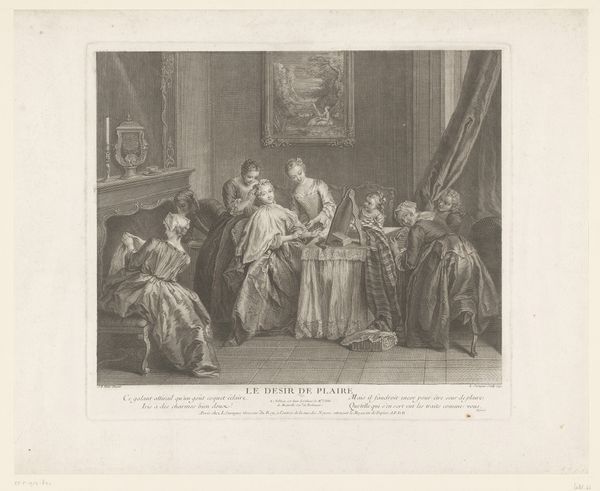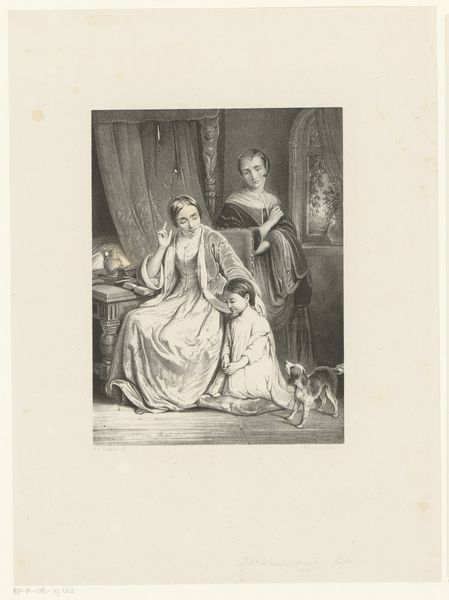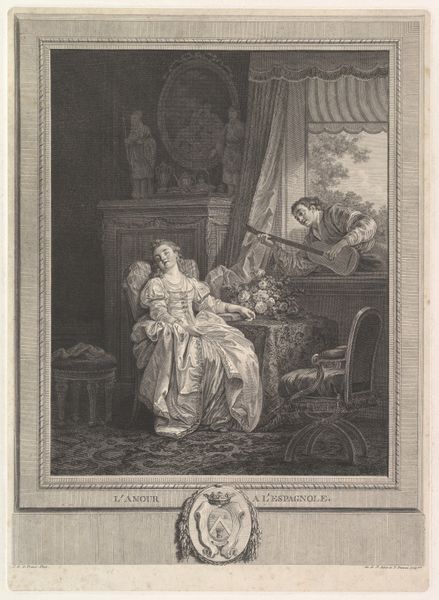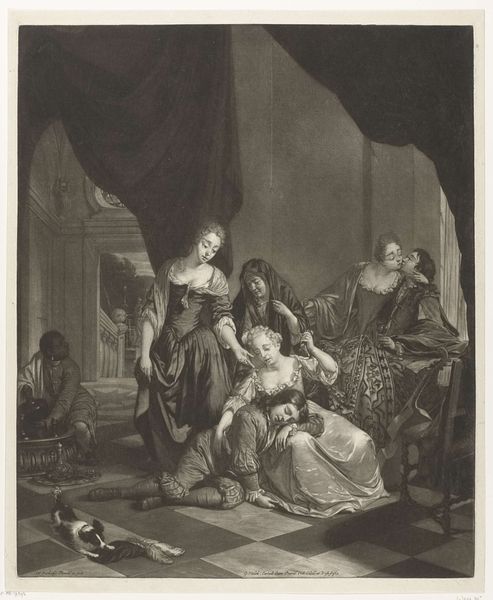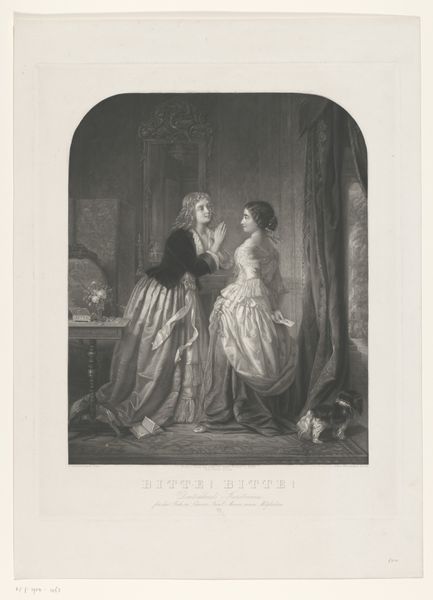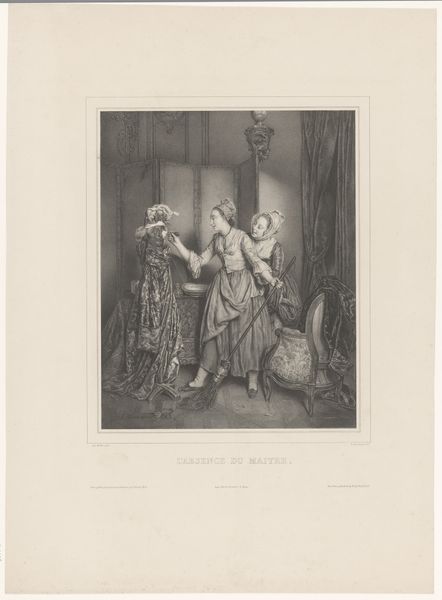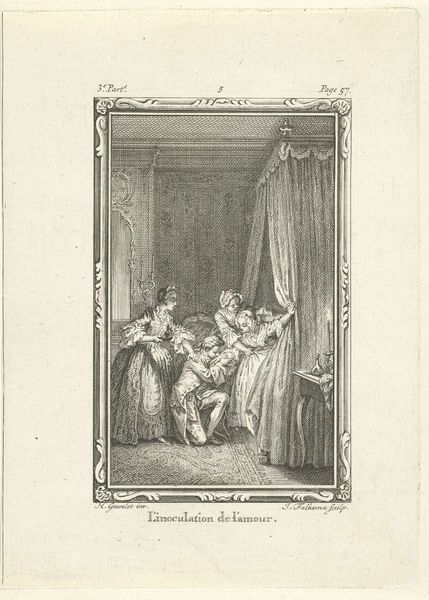
engraving
#
portrait
#
narrative-art
#
baroque
#
figuration
#
line
#
genre-painting
#
engraving
Dimensions: height 384 mm, width 270 mm
Copyright: Rijks Museum: Open Domain
Curator: This engraving, “Huwelijksovereenkomst” or "Marriage Agreement" by René Gaillard, dated before 1754, depicts a fascinating social tableau. What are your first thoughts? Editor: Well, the scene is so meticulously rendered, capturing this formal exchange between what I presume are the bride and groom. It feels like such a staged event; everyone is on display. It almost feels like theater. How do you interpret this staging of marriage? Curator: Exactly! The composition reminds us that marriage, especially amongst the elite during this period, was a public performance deeply intertwined with social and political structures. Consider the artist's choice to represent this moment in such detail. Why foreground this transaction so explicitly? Editor: Maybe it's highlighting the contract itself, making visible what was essentially an economic and social agreement? The couple seem almost secondary to the legal document about to be signed. Curator: Precisely. Engravings like this circulated widely, serving as both records and pronouncements of power dynamics. It presented not just an event, but a public lesson in the correct order of society, where lineage, property, and duty took center stage. Do you notice how the inclusion of seemingly small elements such as clothing contribute to these classist implications? Editor: Absolutely! The extravagant clothing shows immense privilege; the serious wigs and stern faces all underline the wealth and social position being cemented. I guess I had underestimated how much the image promoted the ideology of the time. Curator: Exactly. We can better appreciate this engraving if we consider it an active player in shaping public perception of marriage and the power structures within 18th century society. Editor: I now see how viewing it through that historical and cultural context provides a richer and more complex understanding than a first glance. Thanks!
Comments
No comments
Be the first to comment and join the conversation on the ultimate creative platform.
